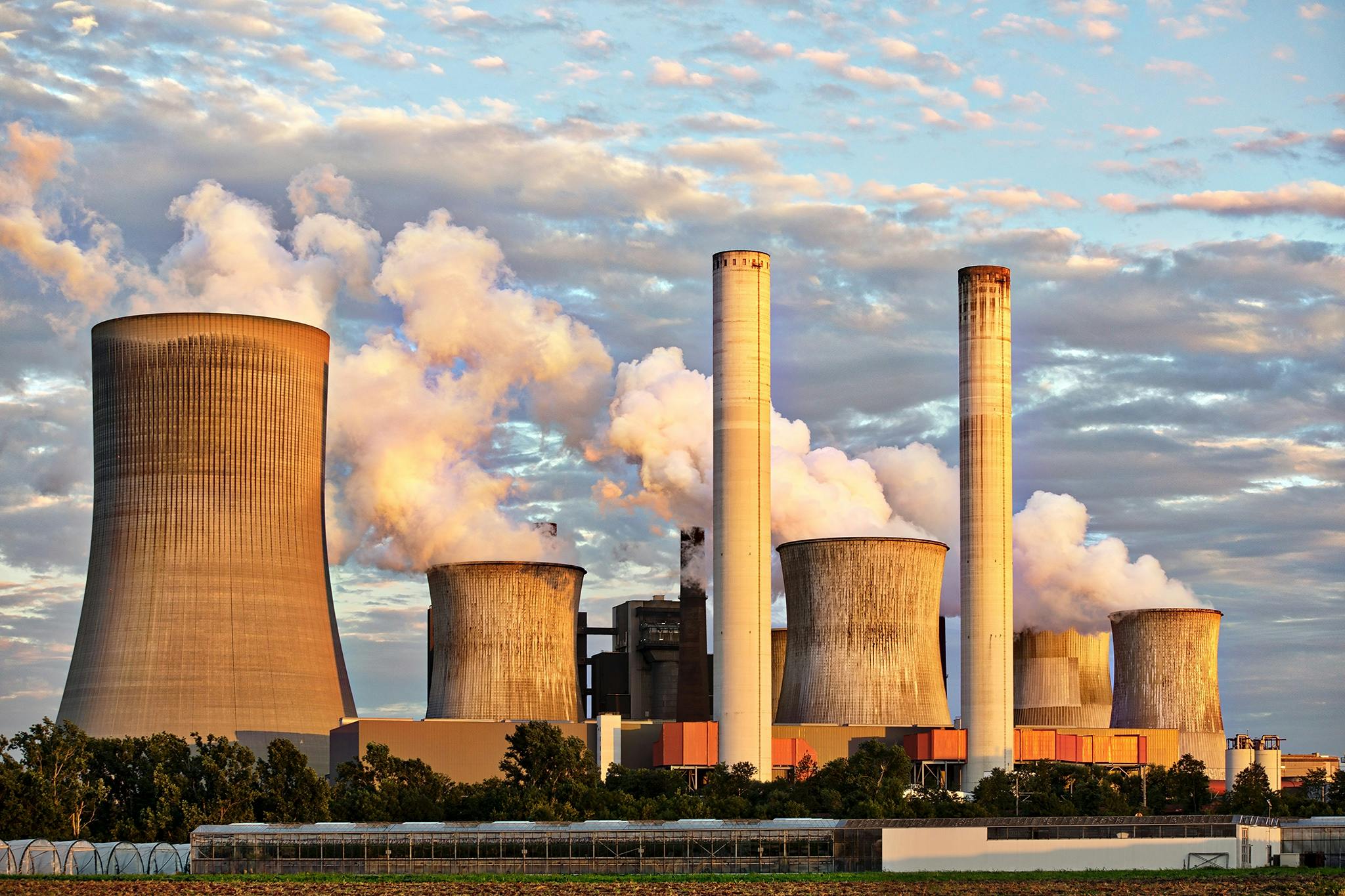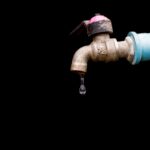Industrial Water Use: A Major Water Consumer

Industries are among the biggest users of water worldwide. They depend on water for many processes like cooling, cleaning, and producing goods. This makes industrial water use a major factor in overall water consumption. However, the growing demand for water in industries is raising concerns about how to balance their needs with protecting the environment and ensuring water for other users.
Key Industries Driving Water Demand
Certain industries require large amounts of water to function. For example, manufacturing plants use water to clean equipment, cool machinery, and mix products. Energy production, especially thermoelectric and hydroelectric power, also needs significant water to generate electricity. Agriculture-related industries, such as food processing, are another major consumer of water. These industries are crucial for economic growth, but they also place immense pressure on local water resources.
Water Usage in Manufacturing
Manufacturing processes heavily depend on water for various tasks. In food and beverage production, water is used for washing, mixing, and packaging. Textile factories require water to dye and treat fabrics. Even electronics manufacturing, which might seem less water-intensive, uses water for cleaning components and cooling equipment. These processes not only consume large volumes of water but can also create wastewater, which often needs treatment before being released back into the environment.
Water and Energy Production
The energy sector is one of the largest users of water. Power plants, especially those using fossil fuels or nuclear energy, need water for cooling systems. Hydroelectric plants, which generate electricity from flowing water, depend entirely on water availability to function. While energy production is essential for daily life, its reliance on water makes it vulnerable to shortages and puts added pressure on already stressed water sources. This creates a cycle where water and energy depend on each other, making efficient management critical.
Environmental Impacts of Industrial Water Use
Industrial water use can harm the environment in multiple ways. Large water withdrawals can reduce the flow of rivers and streams, affecting aquatic ecosystems and wildlife. Additionally, industries often release wastewater containing harmful chemicals, heavy metals, or heat, which can pollute natural water bodies. This pollution not only damages ecosystems but also affects the health and livelihoods of communities that depend on these water sources. Managing these impacts requires industries to adopt more sustainable practices, such as recycling water and treating wastewater effectively.
Industrial Water Footprints Across Regions
Water consumption by industries varies widely across regions. Developed countries often have industries with higher water efficiency due to advanced technologies and stricter regulations. In contrast, industries in developing countries may consume more water and produce more waste due to outdated practices and limited resources. For instance, textile industries in some Asian countries are known for their high water use and pollution. Understanding these regional differences is crucial for creating targeted policies to improve industrial water management globally.
Efficient Water Management Practices in Industries
Many industries are now adopting efficient water management practices to reduce their water consumption and minimize waste. For example, factories are reusing water for multiple processes or installing closed-loop systems to recycle water on-site. Some industries are investing in advanced technologies, such as membrane filtration and reverse osmosis, to treat wastewater for reuse. These practices not only reduce water consumption but also lower costs, making them a win-win for businesses and the environment.
The Role of Policies and Regulations
Government policies and regulations play a key role in ensuring responsible industrial water use. Laws that limit water withdrawals or require wastewater treatment before discharge encourage industries to be more efficient. For example, the European Union’s Water Framework Directive sets strict water quality standards, pushing industries to adopt sustainable practices. In many regions, incentives such as tax breaks or subsidies are offered to companies that invest in water-saving technologies. Strong policies are essential to balance industrial growth with environmental conservation and water access for other users.
Industrial Water Use and Climate Change
Climate change intensifies water challenges for industries. Rising global temperatures and changing rainfall patterns can reduce the availability of water in key industrial regions. Droughts can disrupt production by limiting water supply, while floods may damage infrastructure and pollute water sources. Industries that rely heavily on water, such as agriculture, power generation, and manufacturing, face increasing risks. To adapt, many companies are reassessing their water management strategies, investing in water-efficient technologies, and planning for long-term sustainability in the face of climate uncertainty.
Emerging Technologies in Industrial Water Use
Innovative technologies are transforming how industries use water. Smart water meters and sensors allow companies to monitor and manage water use in real time, helping to identify inefficiencies. Advanced treatment methods, such as nanotechnology and bioremediation, make it possible to recycle wastewater more effectively. Artificial intelligence and machine learning are also being used to optimize water use in complex industrial processes. These technologies enable industries to reduce water consumption, minimize waste, and lower costs, aligning business goals with environmental sustainability.
Industrial Water Use in Developing Economies
Industries in developing economies face unique challenges in managing water. Rapid industrialization often leads to over-extraction of water resources and pollution due to weak regulations and limited infrastructure. For instance, industries in some regions discharge untreated wastewater into rivers and lakes, harming ecosystems and communities. However, there is growing awareness and investment in sustainable practices. International partnerships and funding are helping industries in these regions adopt cleaner technologies and improve water efficiency, ensuring long-term economic and environmental benefits.
Collaboration Between Industries and Communities
Industries and communities often compete for limited water resources, leading to conflicts. However, collaboration can create solutions that benefit both sides. For example, industries can invest in shared water infrastructure, such as reservoirs or treatment plants, that support local communities while meeting their own needs. Public-private partnerships are increasingly being used to improve water access and quality in regions facing water stress. When industries engage with communities and prioritize their water needs, they build trust and create a more sustainable balance of water use.
Water Footprint of Key Industries
Different industries consume varying amounts of water, depending on their processes and products. For example, the textile and garment industry is one of the largest water users, requiring vast quantities for dyeing and finishing fabrics. Similarly, the food and beverage industry depends heavily on water for agriculture, processing, and cleaning. By understanding their water footprint, industries can identify areas for improvement and adopt more sustainable practices, such as reusing water or switching to less water-intensive processes.
Corporate Responsibility in Water Management
As water scarcity becomes a global concern, industries are under pressure to adopt more responsible water use practices. Many companies are now setting goals to reduce their water consumption and minimize wastewater discharge. Transparency in water usage and sustainability reporting has become an essential part of corporate social responsibility (CSR). Industries that lead in sustainable water management not only contribute to environmental conservation but also enhance their reputation and meet stakeholder expectations.
Economic Impacts of Industrial Water Use
Water plays a critical role in driving industrial productivity and economic growth. However, inefficient or unsustainable water use can lead to financial losses, regulatory fines, and reputational damage. In some regions, water scarcity forces industries to invest in costly alternatives, such as importing water or building desalination plants. On the other hand, sustainable water practices can boost economic resilience by lowering operational costs, reducing risks, and creating a positive impact on the communities and ecosystems that industries depend on.
Technological Innovations in Industrial Water Use
Advancements in technology have paved the way for more efficient industrial water use. Innovations such as smart water meters, automated water recycling systems, and AI-driven water management tools help industries monitor and optimize their water usage. These technologies not only conserve water but also reduce operational costs and environmental impact.
Impact of Industrial Water Use on Local Communities
Industries often source water from nearby rivers, lakes, or aquifers, which can significantly affect local communities. Over-extraction may deplete resources, leaving residents with limited access to water for their daily needs. Additionally, untreated industrial wastewater can contaminate local water supplies, posing health risks to people and ecosystems. Collaborative efforts between industries and communities are essential to balance industrial needs with community well-being.
The Role of Policy and Regulation in Industrial Water Use
Government policies and regulations play a crucial role in ensuring sustainable industrial water use. From setting limits on water withdrawals to mandating wastewater treatment standards, regulations ensure that industries use water responsibly. Strong enforcement mechanisms, coupled with incentives for adopting sustainable practices, can encourage industries to prioritize water conservation and protect shared resources.
Conclusion
Industrial water use is a complex but essential aspect of modern life. Industries rely on water for production, cooling, cleaning, and many other processes. However, this heavy dependence on water brings challenges, including resource depletion, pollution, and competition with communities and ecosystems. To address these issues, a multi-faceted approach is necessary.
Efforts to improve water efficiency in industries, such as recycling and reusing water, are proving effective. Advanced technologies like smart meters and AI tools are helping industries monitor and reduce their water footprint. By adopting these innovations, industries can conserve water while lowering costs.
The environmental impact of industrial water use is significant. Without proper wastewater treatment, harmful substances can pollute rivers, lakes, and oceans, threatening aquatic life and human health. Stringent regulations and sustainable practices, such as zero-liquid discharge systems, are vital to minimize these effects and protect ecosystems.
Industries must also collaborate with local communities to ensure shared water resources are managed equitably. Over-extraction or contamination of water sources can harm nearby populations, creating conflict and hardship. By prioritizing partnerships and transparent water management, industries can balance their needs with those of the people and ecosystems they affect.
Governments play a key role in shaping industrial water use. Clear policies and strong enforcement mechanisms can guide industries toward sustainable practices. Incentives, such as tax breaks for water-efficient technologies, encourage businesses to adopt eco-friendly solutions, aligning economic growth with environmental stewardship.
Lastly, the challenges and solutions for industrial water use remind us of the importance of sustainable water practices. That’s why it is important to support organizations like Aqua Maya, which is dedicated to promoting equitable water access in underserved regions. Aqua Maya by its efforts, show the importance of balanced water resource management for both industry and society. By combining innovation, regulation, and cooperation, we can meet industrial needs while protecting water for future generations.
Sources
1. https://www.usgs.gov/special-topics/water-science-school/science/industrial-water-use#overview
2. https://www.unesco.org/reports/wwdr/en/2024/s






